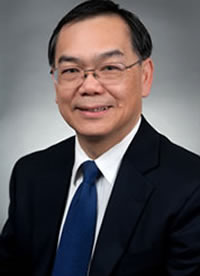Editor's Corner
Challenges in Pediatric Palliative Medicine
By Yuan-Chi Lin, MD, MPH, FAAP
 |
Dr. Lin |
Welcome to the fall issue of the SPPM Newsletter! We cannot wait to share the new SPPM developments, current articles, reviews, research, and upcoming events. We are grateful for Dr. Rita Agarwal’s leadership. She and the Board of Directors have created many excellent new initiatives which will improve pediatric pain education, scientific research and patient care. The new collaborations with many healthcare professionals working in the field of pediatric pain medicine will ultimately improve pediatric pain management services and outcomes. Dr. Agarwal clearly delineated the novel impressive agenda in her SPPM President’s message.
The Seventh SPPM Annual Meeting Chair, Dr. M-Irfan Suleman, has spent countless hours in organizing the event. This is the first time in SPA/SPPM history that the meeting will be hosted outside of the United States. The SPPM meeting is making the most of this opportunity by expanding from a one day event to three days of programs with exceptional content. In this newsletter, Dr. Suleman provides us with a nice overview of the Annual Meeting. We are looking forward to seeing all SPPM members in attendance at this extraordinary symposium in February in the Bahamas.
In this issue of the SPPM Newsletter, we will address the common issues encountered in pediatric palliative medicine. In the United States, the death rate for children aged one to 19 years is approximately 24 per 100, 000 population. The leading cause of death is accidental injury, followed by suicide and homicide, followed by malignant neoplasms. It is very important for pediatric healthcare providers to devise a careful, thoughtful and age-appropriate palliative care plan in delivering care for terminally ill patients. Pediatric palliative care medicine bridges the goals of curing and healing. Consultation for palliative care providers is also appropriate for conditions, even when a cure remains a distinct possibility. Clinicians should try to understand the disease process, improve the quality of life, and ameliorate the suffering of seriously ill or dying children. The process of dying is sorrowful and difficult. Most of the time, it is hard to predict the forthcoming end. Providing analgesia and sedation for a dying child is extremely complex. Despite our best efforts, this remains a challenging task. High-quality palliative care is expected and imperative in current pediatric medicine.
The SPPM appreciates the long and enduring support from Dr. Raeford Brown, Jr., Chair, Section on Anesthesiology and Pain Medicine of the American Academy of Pediatrics. Over the past twenty-five years, Dr. Brown played a major role in establishing pediatric anesthesia as a unique subspecialty. During his tenure as the Section Chair at AAP, he has placed a priority also supporting multidisciplinary subspecialty certification in pediatric pain medicine. Dr. Brown has kindly submitted his final AAP report in this issue of the SPPM Newsletter.
The annual meeting of the American Society of Anesthesiologists was held in Orlando in October. There were several exciting pediatric pain research presentations. In this newsletter, we are pleased to have the presenting authors summarize their significant contributions in recent scientific discoveries.
We can never thank our former SPPM President, Dr. Sabine Kost-Byerly, enough. Her wisdom continues to guide us to a better future for the SPPM. She has generously provided us with an outstanding review of current pediatric pain literature in this issue of the SPPM Newsletter.
The SPPM Newsletter is, for and belongs to all SPPM members. We value your input and appreciate your contributions. We would love to hear from you. In addition, we thank all of the SPPM members for their perpetual support, contributions and encouragement.
Please feel free to contact us with any questions, suggestions, or comments: Yuan-Chi Lin, MD, MPH, FAAP.




